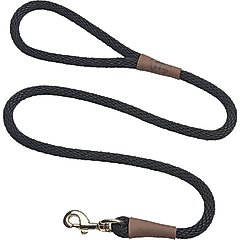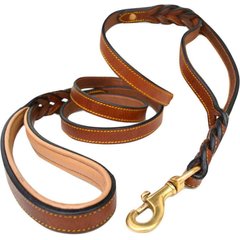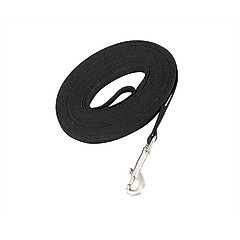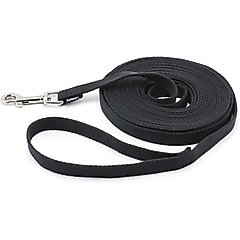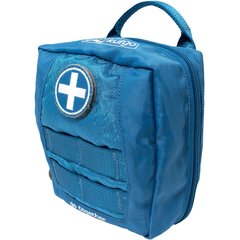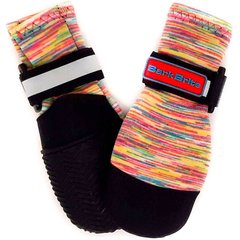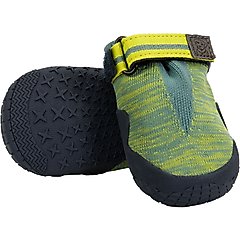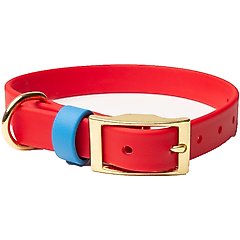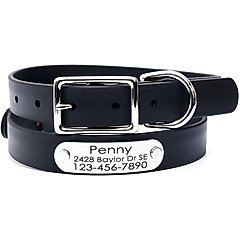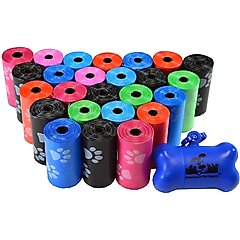5 Tips for Taking Your Dog to the Beach

Photo by iStock.com/Jose Antonio Vidal Humanes
The sun! The sand! The surf! Beach days are even more fun when your furry friend is along for the ride.
Taking some time to prepare for your beach trip and knowing what to expect once you get there makes for a safe and happy excursion. Here are tips for taking your dog to dog-friendly beaches.
Key Takeaways
- Always verify the beach is dog-friendly and understand local rules before bringing your pup.
- Proper training, especially recall cues, is essential for a safe off-leash experience.
- Pack essentials like water, sunscreen for dogs, and a first aid kit to keep your dog comfortable and safe.
- Watch for hazards such as jellyfish, hot sand, and rough surf to avoid injuries or illness.
5 Tips for Bringing Your Dog to the Beach
1. Train Your Dog
Your dog may be ecstatic as they romp on the beach and dog park and bark at the surf. Be aware that they might not be as responsive to you as they are in your yard.
Another factor is the crash of the waves and shouts of giddy kids and other beachgoers, which may drown out your own voice and make your cues inaudible. If danger is lurking in the surf, you may have trouble alerting them to it so they can remain safe.
Don’t let your dog off leash until you’re confident they’ll respond to your training cues, like “come” and “stay,” and will refrain from exploring other beachgoers’ food and belongings.
2. Make Sure the Beach Is Dog-Friendly
When you get to the beach, keep your pup on a dog leash as you scope out the situation.
Recommended Products
Ask yourself important questions:
- Is the area crowded with small children who could get knocked over by an exuberant pup?
- How many other dogs are on the beach? Are they playing appropriately together, and what’s the size difference between the dogs?
- Is the beach littered with trash that your dog may eat, or broken glass and beer caps that can cut their paws?
- If it seems like the environment might be challenging for your dog, keep them on leash until the situation calms down, or move to a less populated part of the beach.
Make sure to pay attention to warning flags that may be flying at lifeguard stands or along the boardwalk.
- Purple flags indicate marine pests such as jellyfish, stingrays, or even sharks.
- Red flags inform the public of rough conditions such as riptides, strong surf, or bad currents.
Your first priority is your dog’s wellbeing, so don’t get too caught up in your own good time. Always keep an eye on your dog and make sure that they’re happy and safe.
3. Pack Proper Gear
Arriving at the beach without preparing for your dog’s basic needs can put a damper on your day. Pack a beach bag with the following gear:
1. Sunscreen for Dogs
Yep, dogs can get sunburn. Lather your pup up with sunscreen specifically formulated for dogs at least 30 minutes before heading out—paying special attention to their ears, nose and areas where they have less fur, like their belly, which can get burned by reflected light if provided sun protection.
Recommended Products
2. Fresh Water and a Water Bowl
Bring multiple gallon-sized jugs of fresh water and a portable dog bowl.
Recommended Product
Keeping your dog hydrated helps keep them cool and protects them from overheating and heatstroke.
Signs of overheating include:
- Rapid breathing or excessive panting in dogs
- Excessive drooling
- Lethargy or refusal to obey or respond to cues
- Vomiting and/or diarrhea
- Bright red or blue gums
- Seizures or collapse
You don’t want your dog drinking ocean water. Drinking salt water can cause your dog to vomit and also act as a laxative, so make sure you’re providing ample fresh water for your pooch.
Use whatever water is left over to rinse off the irritating salt water when you’re done for the day.
If you have a brachycephalic breed (like a Bulldog or Pug), an out of shape pooch, or a senior, be aware that the heat and stress of prolonged beach running might overwhelm your dog. Make sure to take frequent hydration breaks in the shade.
3. A Long Leash
Your dog absolutely must come to you when you call for them (called the “recall cue“) every single time without fail. If they have not mastered this skill, keep them on a long leash—about 20 to 30 feet—while enjoying the sand and surf. They’ll still have enough room to frolic and run, but you’ll be able to reel them in if necessary.
Recommended Products
4. Plenty of Dog Treats
Bring tasty dog treats with you to get in some really great practice of the recall cue on-leash with the distractions of nature and people.
Recommended Product
Lay the praise on thick with each instance of success and give them a treat every time they obey. Soon, you’ll both be going out for your beach day without the need to leash.
5. Dog First Aid Kit
Bring (or put together) a dog first aid kit of bandages, cotton balls, ammonia and hydrogen peroxide in case of jellyfish stings or cut paws.
Recommended Product
6. Dog Life Jacket
If your buddy is a puppy or isn’t a very skilled swimmer, purchase a dog life jacket. A dog life vest helps keep them buoyant as they splash around.
Recommended Product
7. Blanket, Towel, and Umbrella
Bring a thick blanket for your pup to lie on, both on the hot sand and in your car on the way home.
Also bring some towels to dry off. A large beach umbrella will provide your dog with shade from the hot sun.
8. Paw Protectant
The sand can get hot. Protect your dog’s paws with dog boots or dog shoes.
Recommended Products
4. Follow Your Local Beaches’ Rules
Many beaches allow off-leash fun, but not all. Check the posted rules for specifics about what time of day dogs are allowed on the beach, and if they need to remain on leash.
Most dunes and the sea oats that grow on them are protected. If your beach has dunes, keep your dog away from them to avoid trouble.
5. Be Aware of Hazards
Even dog-friendly beaches can be dangerous to your pup. Keep an eye out for these common hazards:
- Hot sand
- Jellyfish
- Hot temperatures
- Rough water conditions
Sand and seawater can be dangerous as well, if your dog ingests them. Watch your dog closely and remove them from dangerous items or areas when necessary.
Other Rules To Follow at the Beach
Below are a few more rules to follow before hitting the sand and surf:
- Puppies under four months should stay home: Young dogs are especially vulnerable to overheating and could face lifelong behavioral challenges if they have a negative experience with another dog.
- Vaccinations must be up-to-date: Contact your vet to make sure your dog is current on all their licenses and vaccinations to keep them—and the other pooches they meet—safe.
- ID tags on a collar: The quickest and easiest way to identify your dog to others is your pooch’s name and your phone number on their ID tags, worn on a waterproof dog collar. Microchipping is a good idea, too.
Recommended Products
- Bring dog poop bags: Keep an eye on your pooch to clean up after their potty breaks.
Recommended Products
With this knowledge, you can keep your dog safe on your next beach vacation. Next, why not teach your dog how to swim?
